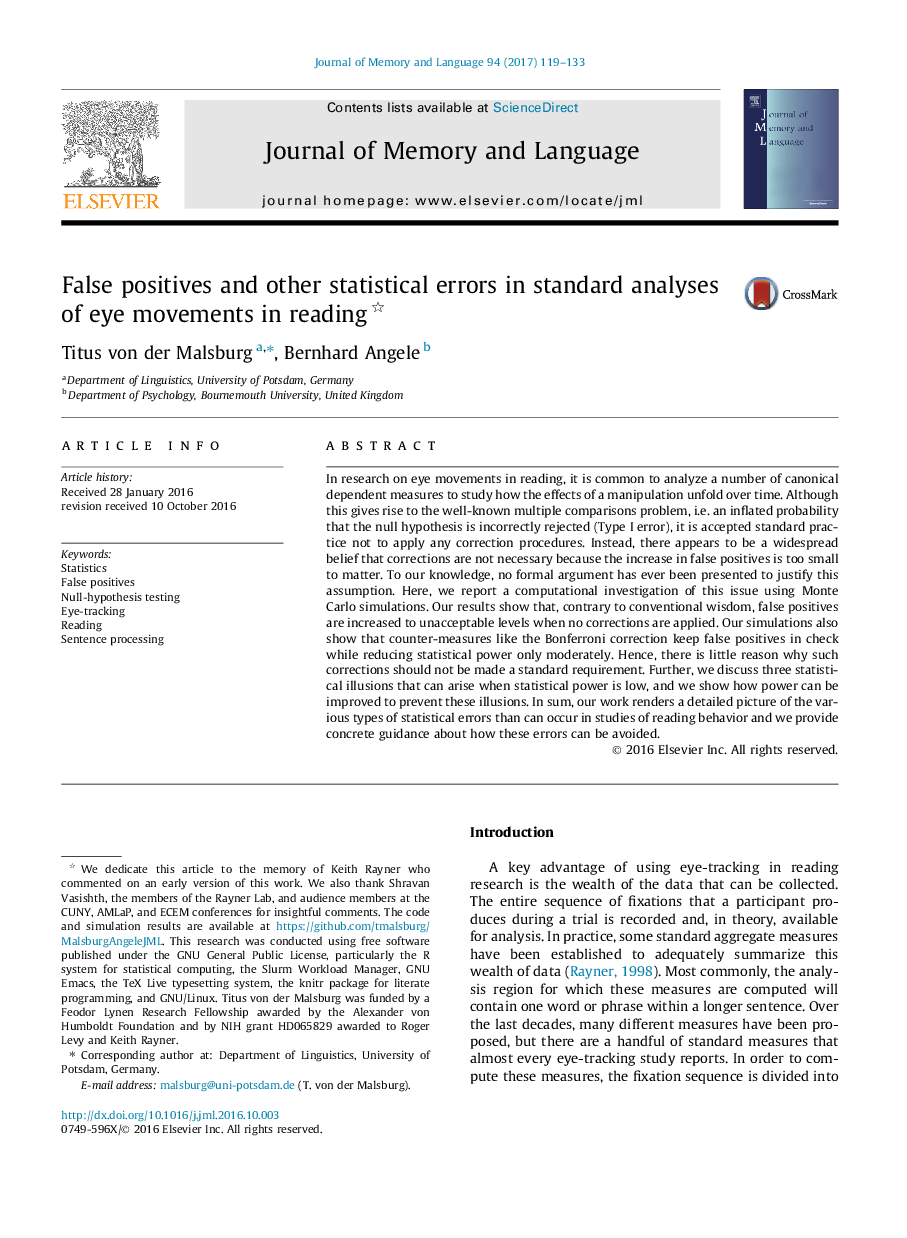ترجمه فارسی عنوان مقاله
مثبت کاذب و سایر خطاهای آماری در تحلیل استاندارد حرکات چشم در خواندن
عنوان انگلیسی
False positives and other statistical errors in standard analyses of eye movements in reading
| کد مقاله | سال انتشار | تعداد صفحات مقاله انگلیسی |
|---|---|---|
| 132743 | 2017 | 15 صفحه PDF |
منبع

Publisher : Elsevier - Science Direct (الزویر - ساینس دایرکت)
Journal : Journal of Memory and Language, Volume 94, June 2017, Pages 119-133
ترجمه کلمات کلیدی
آمار، مثبت کاذب، تست فرضیه صفر، ردیابی چشم، خواندن، پردازش احکام،
کلمات کلیدی انگلیسی
Statistics; False positives; Null-hypothesis testing; Eye-tracking; Reading; Sentence processing;

